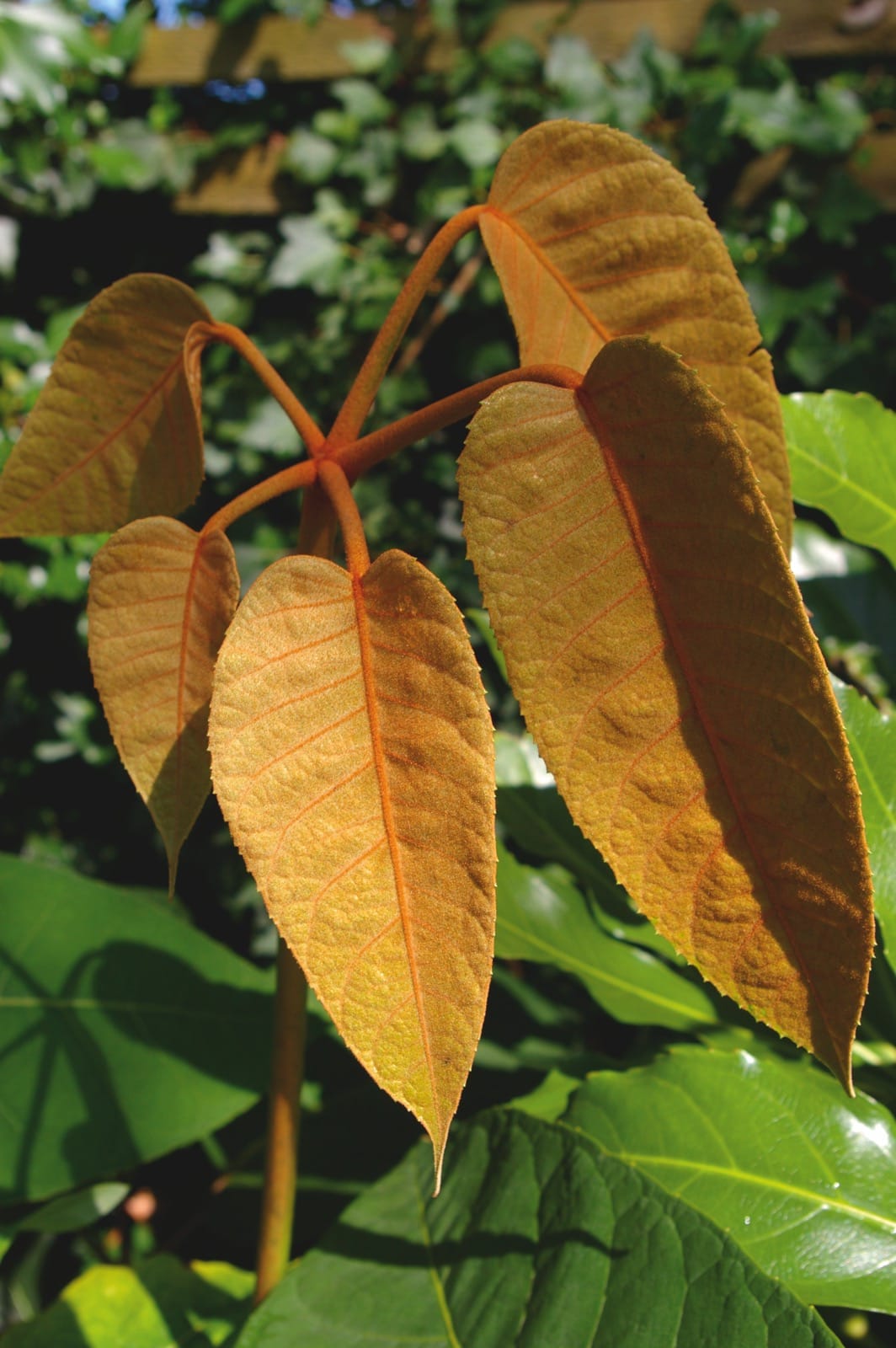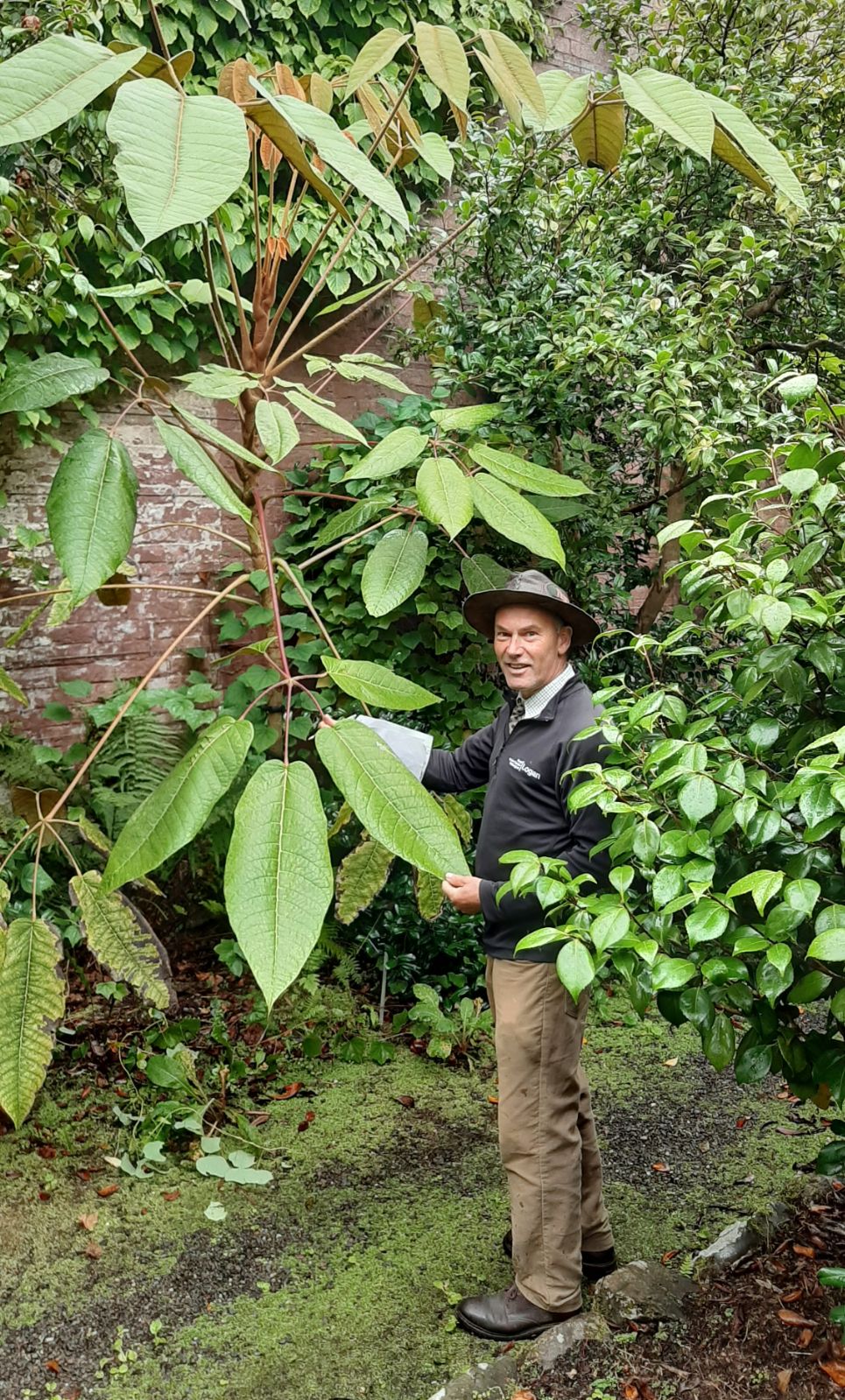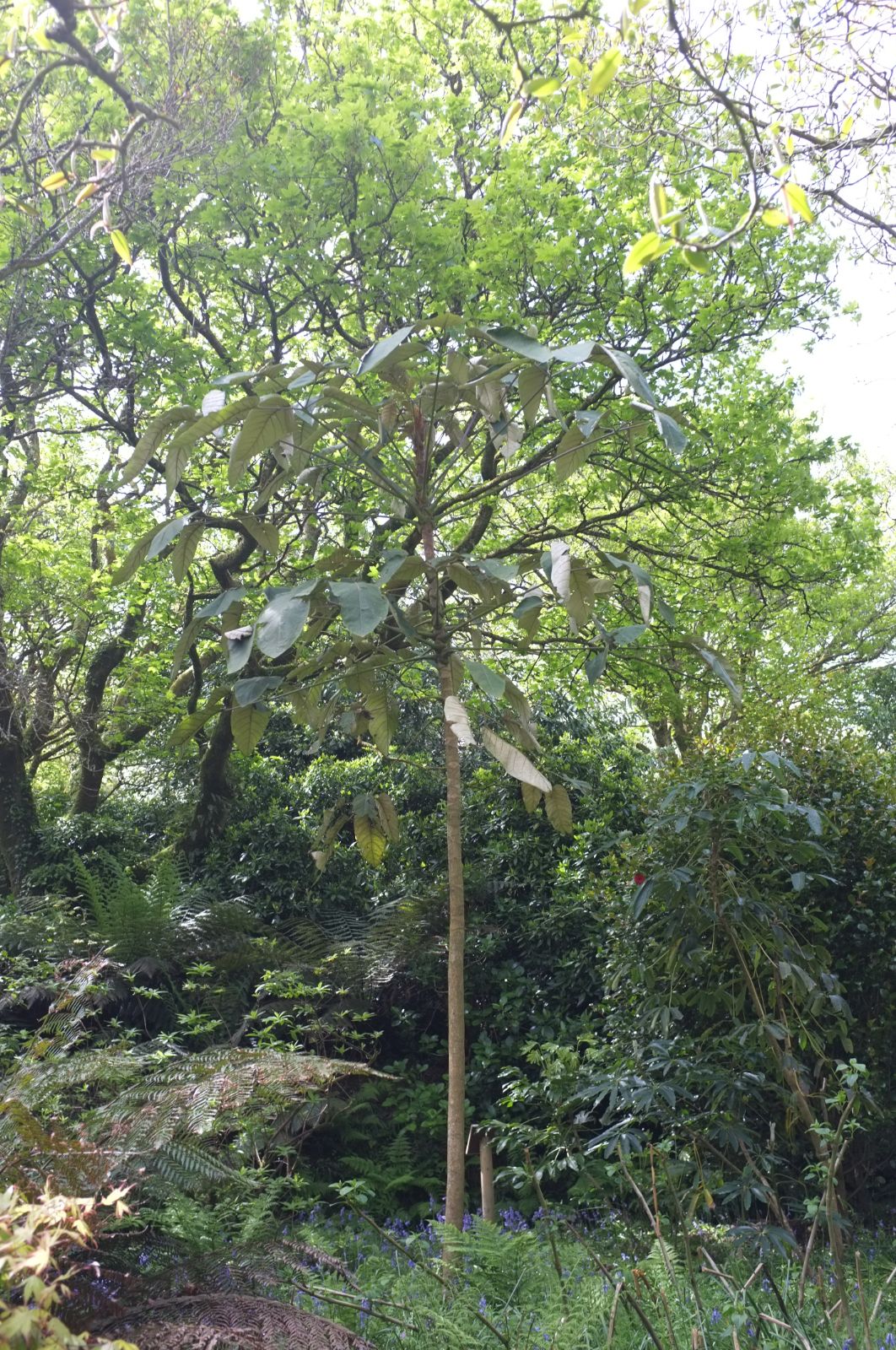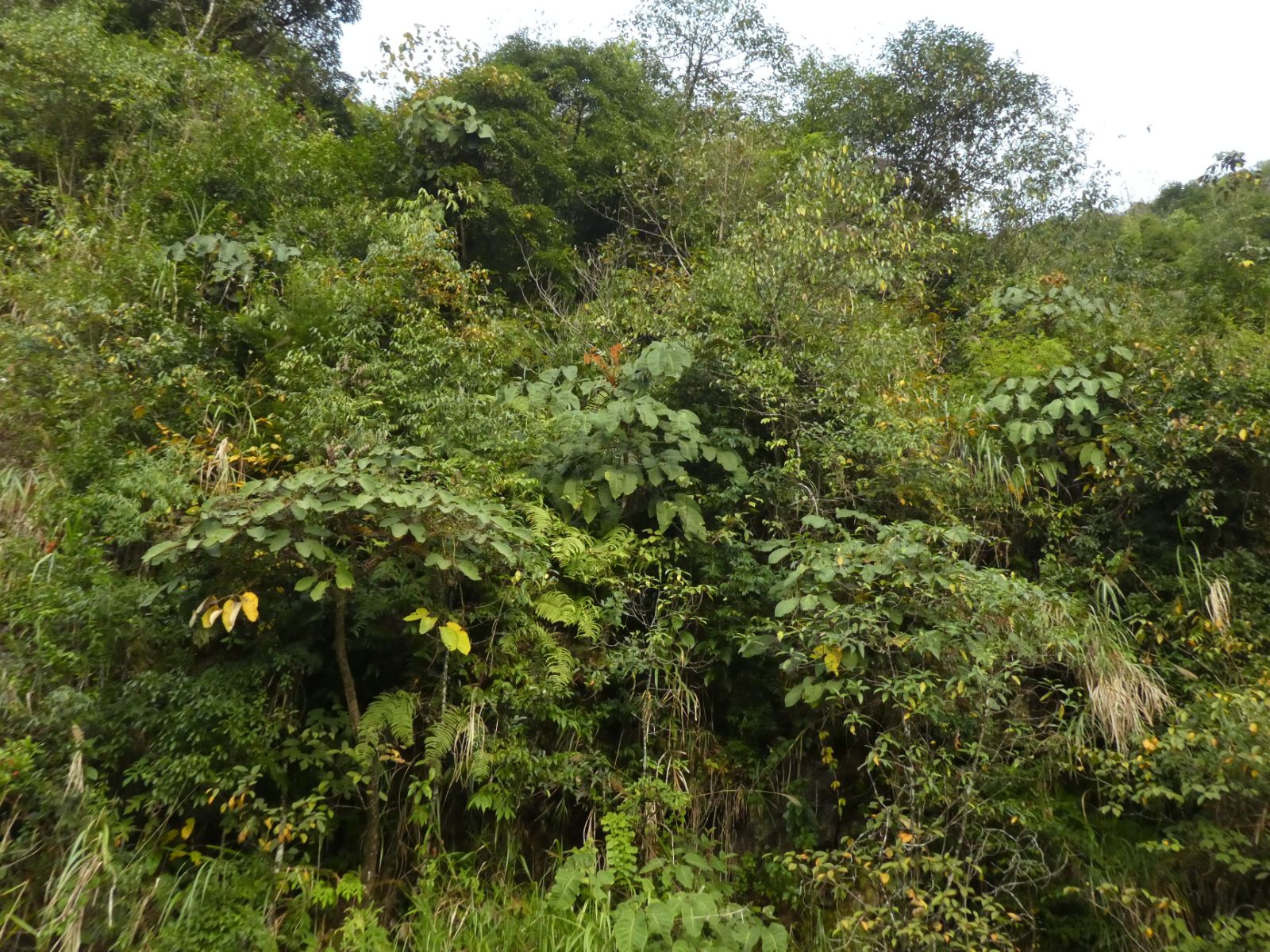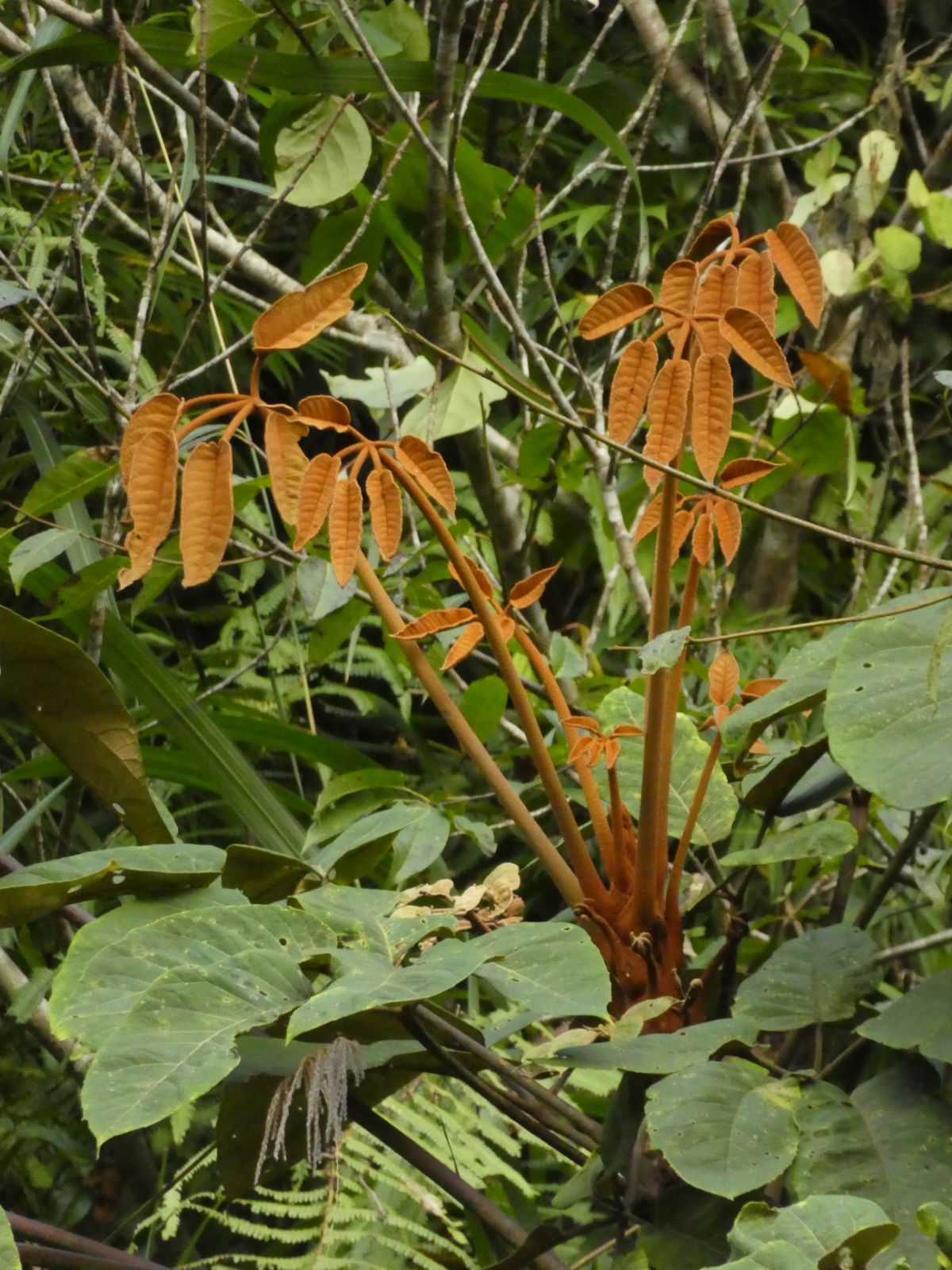Schefflera macrophylla
Credits
Article from New Trees by John Grimshaw & Ross Bayton
Recommended citation
'Schefflera macrophylla' from the website Trees and Shrubs Online (treesandshrubsonline.
Genus
Tree to 20 m. Leaves evergreen, palmate; leaflets five to seven, leathery, 20–55 × 8–22(–20) cm, ovate-elliptic, upper surface dark green, becoming glabrous, lower surface densely covered in white or russet indumentum, which also covers the petioles and upper leaf surfaces when young, 8–12 pairs of secondary veins on each side of the midrib, margins entire or with inconspicuous teeth, apex acuminate; petiole 45–100 cm long, purple. Inflorescences terminal, paniculate, primary axis to 75 cm long, secondary axes to 40 cm, densely covered in reddish brown stellate hairs; composed of numerous umbels. Flowers small, pedicellate; calyx entire or inconspicuously five-toothed, with dense reddish stellate hairs. Merrill 1924, Xiang & Lowry 2006. Distribution CHINA: southeast Yunnan; VIETNAM. Habitat Montane forest, especially in valleys, between 1900 and 2600 m asl. USDA Hardiness Zone 8–9. Conservation status Not evaluated. Illustration NT779.
‘Dramatic’ is perhaps the best adjective for Schefflera macrophylla, with its long petioles supporting a broadly spreading ‘hand’ of leaflets, and all the new growth and leaf undersides covered in russet or ginger hairs: it inspires lust. It is a spectacular sight in the garden, even as a young plant, or as a mature tree in the mountains of Vietnam. In the forest it becomes a spindly unbranched and non-flowering tree, to 20 m, but in exposed situations it is more compact and floriferous (B. Wynn-Jones, pers. comm. 2008). It was first introduced in 1998 by Tom and Jo Hudson (T. Hudson, pers. comm. 2008), and has been growing well at Tregrehan ever since. It was found by the Wynn-Joneses in 2000 and they have made two collections (BSWJ 8210 and BSWJ 9788), from which have grown the plants currently sold through Crûg Farm. This material was initially identified as S. petelotii Merr. (a much smaller species from lower altitudes in the same general area), and plants were first released under this name in 2007; specimens should be relabelled. It is perhaps too soon to make a balanced assessment of its hardiness. At Crûg Farm, plants have suffered –11 ºC without protection (Crûg Farm Plants online database 2007–2008), but Dan Hinkley (pers. comm. 2008) reports that his collection DJHV 06124 was severely damaged in his Windcliff garden in Washington during the comparatively mild 2007–2008 winter there. A site sheltered from wind will be important. In Vancouver it does well in the David C. Lam Asian Garden. Peter Wharton, in his last communication of information for New Trees, wrote that it is ‘truly a stunning, bold architectural plant. We have several Crûg plants now growing away with fine vigour. The combination of this species with large-leaved Asiatic magnolias and rhododendrons is a classic’ (pers. comm. 2008).
A form with silvery undersides to the foliage is known as var. flava Bui, and a similarly large-leaved species, but in which the leaflets are deeply pinnately lobed when young, is S. farinosa (Blume) Merr. Seed of both of these has been collected (B. Wynn-Jones, pers. comm. 2008).


